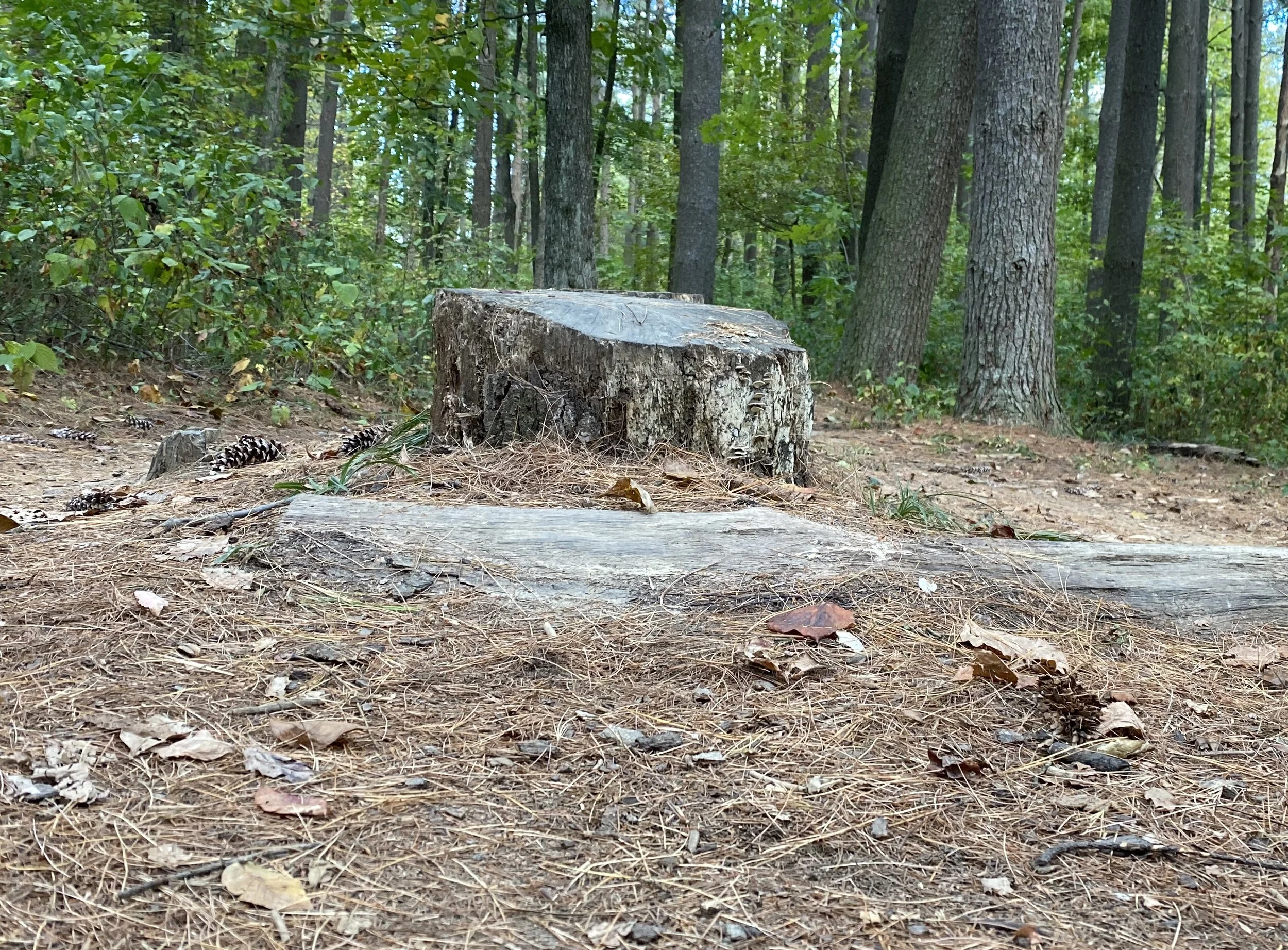Aha, we got you! Actually, we want to talk about the whole notion that you can “de-risk” a startup. We frequently hear founders and investors make a statement like “This is a good investment because it’s already been de-risked.” Or advisors will say, “We can help you de-risk your startup.” This makes us want to remind people about the difference between uncertainty and risk. Risk is probabilistic and can be quantified. Uncertainty is about the unknown. It’s hard to put a probability on the success of a startup. So, moving startups forward requires reducing uncertainty rather than risk.
Let’s work through a more tangible example. On one of our favorite mountain bike trails, there is a set of four stumps. It’s set up for bikes to ride up and across the tops of the stumps. At each end, the stumps are shorter for easier access. It’s set to the side of the trail so you don’t have to risk jumping it at all if you don’t want to. The first time we came across this jump, one of us easily jumped it safely. The other could only see the risk of crashing.
The Stumps to Jump
In order not to crash, a rider has to: 1) make it to the top of the first stump, 2) ride across the four stumps, 3) get down the other side all while staying upright on the bike, or 4) exit in the middle while still controlling the bike. The risk of crashing doesn’t change. So riders have to reduce the uncertainty of success for each of these three steps. How do they do that?
First, they practice jumping up distances the same height as the stump, or about 10 inches. That means jumping over stone curbs and other obstacles until they are certain they can move the bike upwards for that distance. The more obstacles you jump over and the higher the distance you jump, the more you reduce the uncertainty of getting over the first stump.
Then they have to ride a narrow line across the four stumps of about six feet in length. That means practicing riding a line like the lines in a walkway. Next, practice riding what we call a “skinny.” Some skinnies are just a few inches off the ground so the danger of exiting in the middle is minimal. Others are higher off the ground. Again, the goal is to reduce the uncertainty of being able to ride across the top. Think about walking on a painted line in a parking lot, then walking on a 2X4 on the ground, then walking on a narrow plank across a gulley. It is the same task, but each step has escalated risk.
A Mountain Biking Skinny
It turns out that getting down is not as hard as getting up. So there’s a pretty good chance if you get up safely, you’ll get down too. But a rider can also practice going over “drops” to make sure they can handle the distance down, especially if they exit in the middle. Practicing each of these skills continues to reduce the uncertainty of the outcome and increase confidence that even if you “fail” at the task and exit early, you will not get injured.
And that’s just what I did for about three months. Every time we rode, I would jump over things, ride skinnies, practice holding a line and take bigger and bigger drops. Eventually, it was time to put it all together. I had reduced the uncertainty of all the parts. Now, could I put the parts together? The risk of crashing didn’t change. Instead, my knowledge about how to manage those risks changed.
So, what happened? The first time I tried to jump the stumps, it was nearly perfect. I flew up to the top of the stumps, across them, and down the other side. That encouraged me to try it three or four more times. The second time, I flew off the side of the last stump and ended up in a bush. The third time, I only made it across three stumps and then came off the side, but stayed upright. Watch Todd jumping the stumps in the video below. Jumping the stumps is still risky. I don’t get it right every time. But I know it can be done and how to do it right.
Our intent in writing The Titanic Effect was to help startups learn about the skills and decisions they need to reduce the uncertainty of their startups. The risk of a startup’s success has been unchanged. Learning how to reduce uncertainty can help startups navigate more smoothly. By reading our blog or book, startups can learn how to better survive the “early exits” and minor iceberg collisions without sinking.



